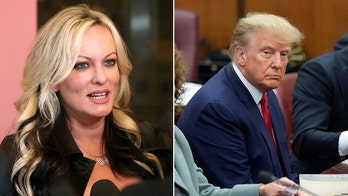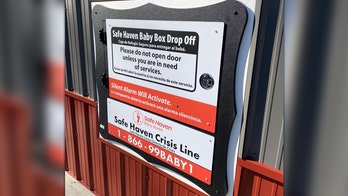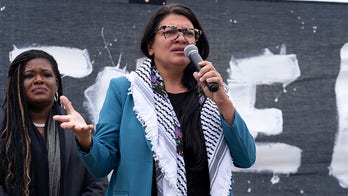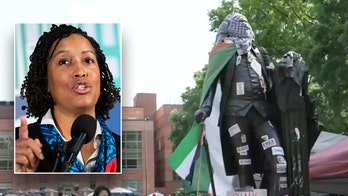
Aug. 18: President Obama holds a discussion on the economy and other issues with a group of Ohio families at a private residence. (Fox News)
President Obama's fundraising spree across the country to help his party retain power isn't just reaping millions of dollars for Democratic candidates -- it's also said to be costing taxpayers millions of dollars.
And it's leaving a massive carbon footprint, too.
One analyst estimated Obama's five-state, three-day tour cost taxpayers about $2 million.
On top of that, the carbon footprint, or pollution generated by the travel, probably matched "something of a size-32 shoe," said Pete Sepp of the National Taxpayers Union, a group that promotes smaller government and fewer taxes.
Obama began his cross-country dash on Monday, taking his GOP-bashing message to Wisconsin and Los Angeles. On Tuesday he went to Seattle, and on Wednesday to Miami for a total of nine fundraising events.
Taken together, it's an 8,000-mile, fossil fuel-burning odyssey that, by pairing official events each day with political ones, allows him to bill taxpayers for most of the cost of the trip -- a tradition that long predates the current president.
"Whenever a president travels, the tab can run up for taxpayers," Sepp told FoxNews.com.
The White House did not respond to an e-mail seeking information
Travel rules developed under the Reagan administration state that the Air Force pays all costs for the use of the aircraft on such trips, but that the government must be reimbursed for airfare, food, lodging and other expenses incurred during whatever portion of the trip is political.
Reimbursement for political activities involves a tricky formula, however, and actual reimbursements typically come nowhere close to compensating the government for the cost of such trips.
Secret Service costs, for one, are always footed by the government.
Based on the president's haul along the campaign trail, the investment paid off. An estimate for fundraising at Monday's event for Wisconsin gubernatorial candidate Tom Barrett and the state Democratic Party was $500,000. Lunch tickets cost $250 and getting a photo with the president could be had for a $10,000 donation.
"This is the largest event of its kind in Wisconsin campaign history," said Phil Walzak, communications director for Barrett for Wisconsin.
In Los Angeles, Obama spoke at two glitzy fundraisers, including one that had been expected to raise $1 million for Democratic congressional candidates. In Seattle, an estimated $1.3 million was raised for Democrats, including Sen. Patty Murray, during two events.
Ohio Gov. Ted Strickland wouldn't indicate how much was made during the president's visit there, though tickets ranged from $100 to $2,000 for 580 people.
In Miami, Obama headlined a $700,000 fundraiser for Florida Democrats, where he repeated his attacks on Republicans.
As for the travel costs, Sepp offered what he said was a conservative estimate of $75,000 an hour to fly the president around in Air Force One. On top of that is likely another $25,000 for a back-up 757 airplane to serve as an alternate Air Force One and $8,000 for a cargo plane that carries the presidential limousine and other vehicles.
Sepp, who said the costs are only educated guesses based on information culled from newspaper, Congressional Research Service and Government Accountability Office reports, calculated a cost of $1.45 million for the president being airborne for 14.5 hours -- the combined time to cover each leg of the trip. He figured another half million dollars for Secret Service, another number he called a conservative estimate.
"I wish this stuff could be more precise, but, boy, none of this has been transparent," Sepp said.
Leslie Paige, a spokeswoman at Citizens Against Government Waste, said she wouldn't venture to guess the costs because none of the budget is on the record.
"We don't have a sight line onto the way this is done," she said. "That's all we're reduced to -- some educated guess work."
Paige noted that part of the reason the information is not made public relates to national security.
"We don't want to compromise anyone's safety, but I don't know why there can't be more transparency," Paige said, adding that it's not her decision to decide what's an appropriate amount of travel for the president, but taxpayers can determine for themselves whether it is worth it.
As for the carbon footprint, Sepp said, "It has to figure in the minus column for any elected official who believes in carbon reduction."




